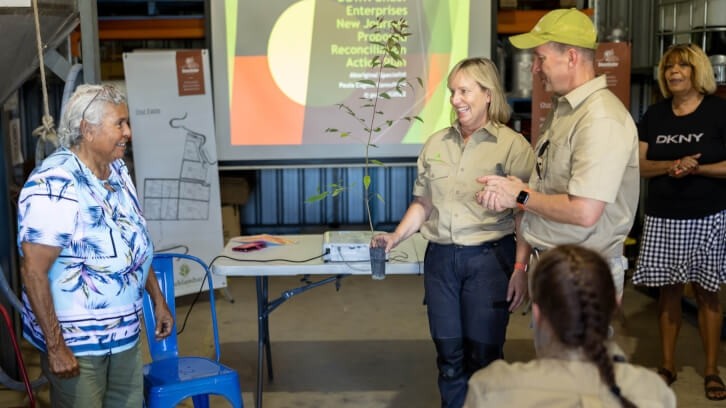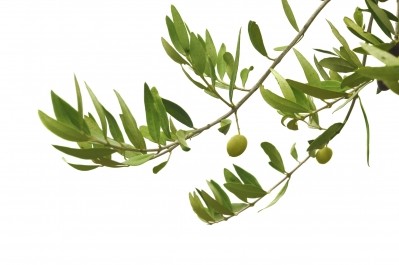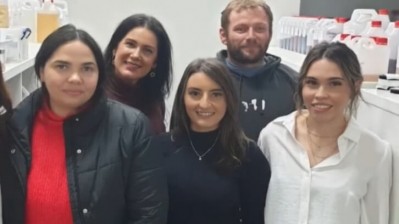Ancient ingredient revival: tea tree oil

Tea tree is perhaps one of the most well-known essential oils used in cosmetic formulations and, particularly in skin care products to treat issues such as acne.
As a native Australian plant, tea tree has a well-documented history of use by the indigenous Bundjalung people for health and wellness purposes and the ingredient is ingrained in their culture.
The global tea tree oil industry first began around the 1980s when commercial tea tree plantations started to appear. The oil was mainly used in anti-acne skin care treatments throughout the 80s, 90s and 00s, but it’s now being seen in more unexpected products.
According to Phillip Prather, Chair of the Australian Tea Tree Industry Association and COO at Down Under Enterprises (an Australian company that grows and exports tea tree oil), it has been incorporated into new product categories in recent years.
“More of the mainstream companies are incorporating tea tree into their products in new ways: for example, P&G’s Head & Shoulders brand now features tea tree,” he shared. “Colgate Palmolive also has a new Naturals product line, Smile, which has Tea Tree and Mint incorporated into the toothpaste.
“We have had a lot of a lot of interest customers for dandruff and oral care,” he shared. “Tea tree has really got that great consumer reputation,”
It’s certainly one of the most well-known essential oils for beauty and personal care purposes worldwide. Prather cited a report from Mintel research that claimed tea tree was the fourth biggest natural ingredient that consumers actively searched for and the highest-ranked essential oil.
He also said that Mintel’s Global New Products Database (GNPD), which captures beauty and personal care launches across the globe, showed that last year there was a 22% increase in launches of new products that contained tea tree compared to the previous year.
“Melaleuca alternifolia is very important to the Bundjalung people”
Down Under Enterprises’ tea tree farm is located near Byron Bay in the Northern Rivers area of New South Wales, which is where the Bundjalung First Nations people live and where tea tree originated.
The ingredient is derived from the Melaleuca alternifolia plant species, but according to Prather there are six different versions and only one type has been fully explored with clinical studies to show strong efficacy.
“The specific chemotype is the terpinen-4-ol-dominant variety,” he shared. “Typically, the concentration of this component is in the 40-43%. Although the International Organisation for Standardisation (ISO) allows for up to 48%, I’ve never seen anything over 44% that is natural/pure. It’s only this one type that has the clinical data and safety data associated with it.”
This is also the genus that is used by the Aboriginal First Nations people of Australia.
“Melaleuca alternifolia is very important to the Bundjalung people: the local people in the area where we have the farm,” explained Prather, who has been working closely with Aboriginal Elders in recent years as part of the company's Reconciliation Action Plan. “It's in a lot of their stories, their ancient learnings and also in their health and wellness.”
He continued: “For them, health and wellness are more than just about themselves – this is about the land as well. So, if the trees are doing well, all of the plants are doing well, the people are doing well.”
Melaleuca alternifolia holds a special place in the hearts of the Bundjalung people and Prather explained that it’s even featured in one of their folklore stories about the Princess of Tea Tree, Eelemani, who left the local area to explore and dropped tea tree seeds all along her trail. When she wanted to return to her people, she found them because the seeds had grown into trees with bright white bark that stood out in the moonlight and guided her back home.
Opportunities from an air-cleaning perspective
Prather and his wife Dee-Ann first founded their EcoVadis platinum-rated company 22 years ago. Dee Ann’s parents were tea tree farmers and the couple, who were living in the US, spotted an opportunity to market tea tree oil as an efficacious cosmetic ingredient outside of Australia. They worked with naturals companies like Burt’s Bees and Aveda and the business grew from there.
According to Prather, there is plenty of clinical evidence that shows that tea tree has antibacterial and anti-fungal benefits without compromising the surrounding bacteria.
“It doesn't kill all of the good bacteria,” he explained. “It's got a good efficacy against transient bacteria, as well as the fungus that causes dandruff, Malassezia furfur. It kills that fungus but doesn't affect some of the good bacteria that contribute to your natural microbiome.”
He also shared a lesser-known fact: that tea tree has anti-inflammatory properties.
“This is why you'll see tea tree used in a number of burn medications for skin burns, as it has anti-inflammatory and antimicrobial properties, so it'll help reduce the inflammation.”
But the company is cautious not to overstate tea tree’s many benefits after a formulator once expressed disbelief during a presentation because there were so many potential benefits of tea tree.
“This made us think that maybe we're being too much of ‘a Swiss army knife’ and that we needed to narrow things down and only say what tea tree does really well that we've got really good evidence for,” he said. “That came back to dandruff and scalp issues and acne and other skin issues, so that's really what we as a company try to focus in on; these are our ‘hero applications’.”
However, he said that tea tree is now being explored from an air cleaning perspective too and that there are more opportunities for it home care and personal care. Basically, in “any application that needs an antiviral quality”.
“People still want to use it straight on their skin”
Prather explained that tea tree has previously received a bad reputation for use to treat psoriasis and eczema, but cites a clinical paper by Joanna Wallengren from Lund University in Sweden that proves otherwise.
“She did research on using tea tree for psoriasis and found when it is used in a 20%- 50% concentration in a skin cream, it works better than steroid creams for psoriasis,” he said.
He also said that although essential oils have a bad reputation for being irritating for skin, this is when 100% straight tea tree is applied topically.
For Prather, there is still a huge education gap for how tea tree oil should be used as a skin care solution for acne and other skin issues. “People still want to use it straight on their skin. But they need to make sure they're using it correctly. As this study showed, it shouldn’t be used straight on the skin in full concentration.”
He said he has recently spoke to various medical companies that produce products for sensitive skin and that some of the data he has shown them has been “blowing them away” and “could potentially work better than steroid creams” and even “potentially help with the underlying infection.”
Supply chain traceability
Another issue that the tea tree oil currently industry faces is adulteration and fakes. “There is a lot of stuff out there and if consumers go to cheap online sources, they're going to get what they pay for,” said Prather.
To help counteract this, ATTIA is just finalising getting its Trustmark certified globally for pure Australian Tea Tree oil.
Prather shared the company has recently been getting more customer requests to showcase full traceability and ingredients origin throughout the entire supply chain.
He also revealed that Down Under Enterprises is just about to launch a major campaign with global manufacturers to encourage them to use this logo, as it will provide consumers with evidence that the product contains pure and traceable Australian tea tree oil that's been produced to a system quality standard.






















